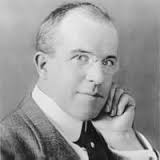Get Today in Masonic History into your Inbox. Sign up today for one of our email lists!
Need an article for your Trestleboard/Newsletter see our Use Policy
J. Stuart Blackton Passes Away

Today in Masonic History J. Stuart Blackton passes away in 1941.
J. Stuart Blackton, born James Stuart Blacktin, was an American film maker and is considered the father of American animation.
Blackton was born in Sheffield, Yorkshire, England on January 5th, 1875. At the age of 10 he emigrated to the United States with his parents.
When Blackton was old enough he began working at the New York Evening World newspaper. In 1896 he was assigned a story which changed the course of his life. Blackton was sent to interview Thomas Edison to do a story on Edison's new Vitascope, a motion picture camera.
Edison was very interested in the good press so he took Blackton to his cabin "Black Maria" where Edison had already filmed some of his movies. On the spot he created a film with Blackton as the star. Edison did such a good job of selling the Vitascope, Blackton and his partner Albert Smith, a magician Blackton performed with, bought a Vitascope and several prints of films.
Blackton and Smith began showing the films as part of their act, doing live performance in between the films. Often the live performances were overshadowed by the films shown on the Vitascope.
Once Blackton had success with the films he had purchased from Edison, the next logical step was to start creating films of his own. Often the films were written, directed, starred and produced by Blackton. This became the foundation of the American Vitagraph Company.
One of Blackton's films, "The Enchanted Drawing", was the beginning of experimentation on Blackton's part. The Vitagraph Company had been doing well and Blackton saw this as a sign to push the envelope of what was being down with the films. In "The Enchanted Drawing" Blackton drew a face with a bottle of wine and other items around it. As Blackton seemed to the pull the items off the page and they became real the face on the page changed.
In 1915 Blackton felt America needed to join the Allies in World War I. Blackton made the film "The Battle Cry for Peace" which was strongly supported by former President Theodore Roosevelt. Roosevelt convinced an Army General to loan an entire regiment of marines to Blackton as extras. The film when it was released was highly controversial and considered militaristic propaganda. The film even rivaled "Birth of a Nation", which was released the same year, for it's controversy levels. Although for vastly different reasons.
Blackton left Viatgraph in 1917 to go independent. He returned in 1923 as the junior partner, just two years before Smith, now the senior partner, sold Vitagraph to Warner Brothers for a comfortable profit.
Blackton did well financially until the stock market crash of 1929. For the remainder of his life Blackton traveled around presenting copies of Vitagraph's films and lecturing about the day's of silent movies.
Blackton passed away on August 13th, 1941.
Blackton was a member of Centennial Lodge No. 763 in New York, New York.
This article provided by Brother Eric C. Steele.

